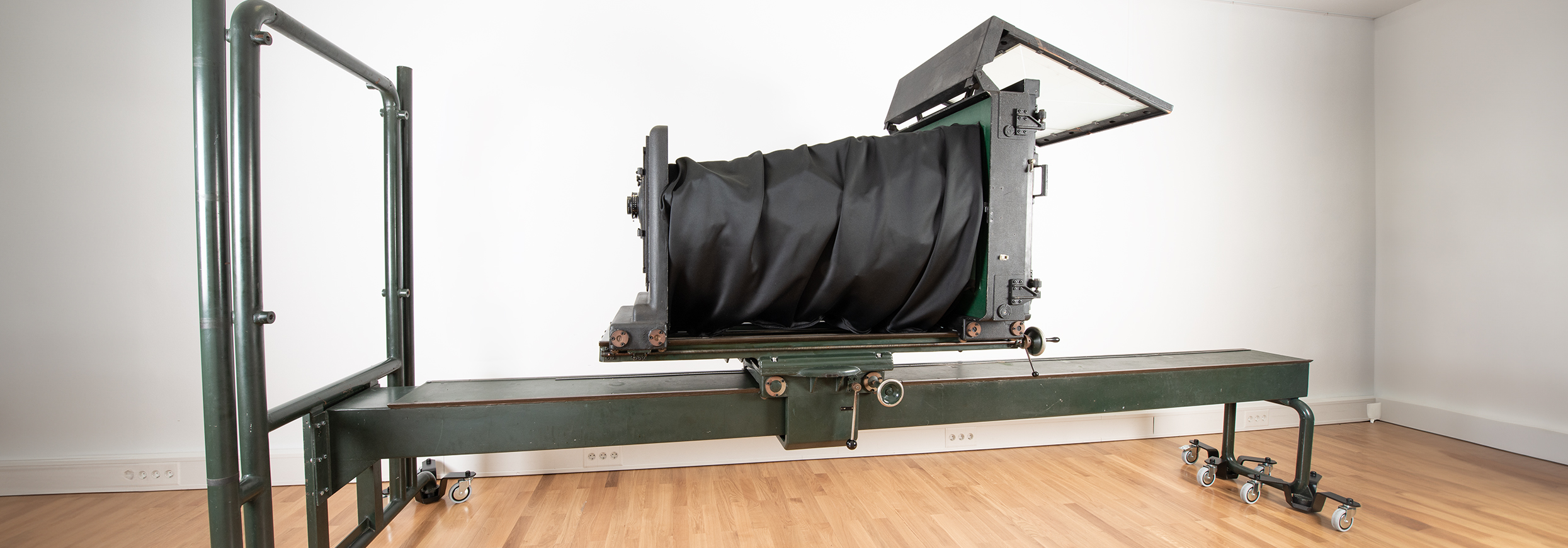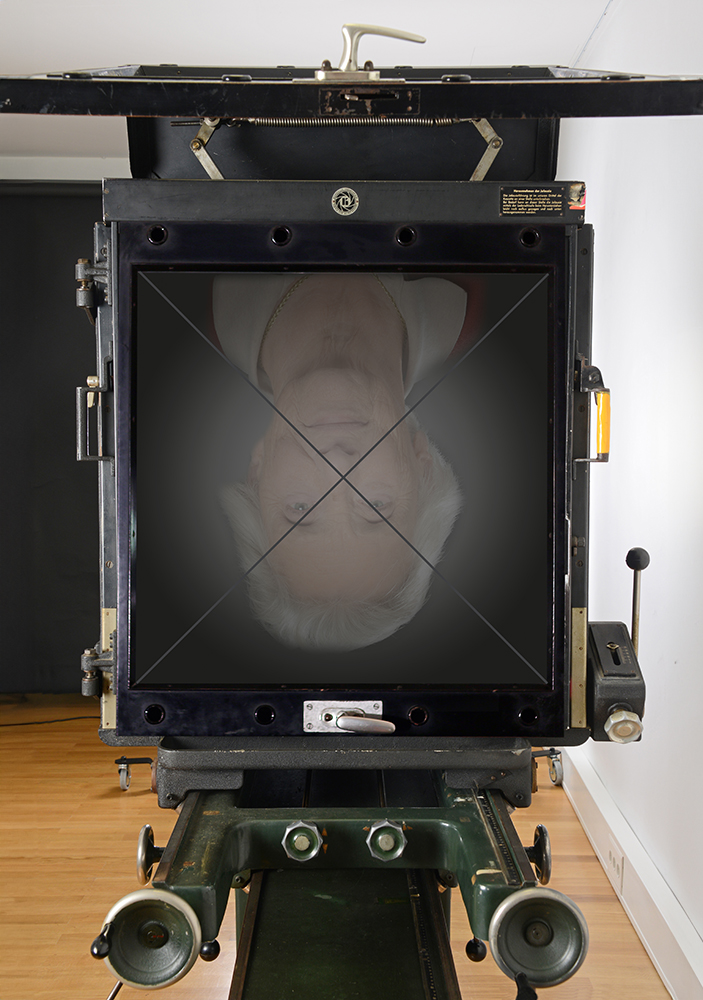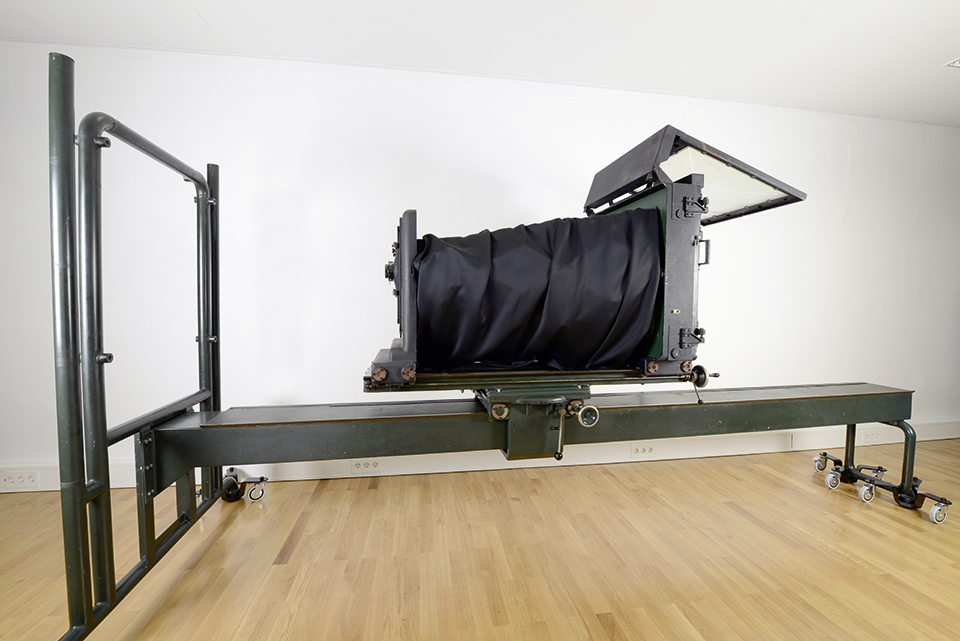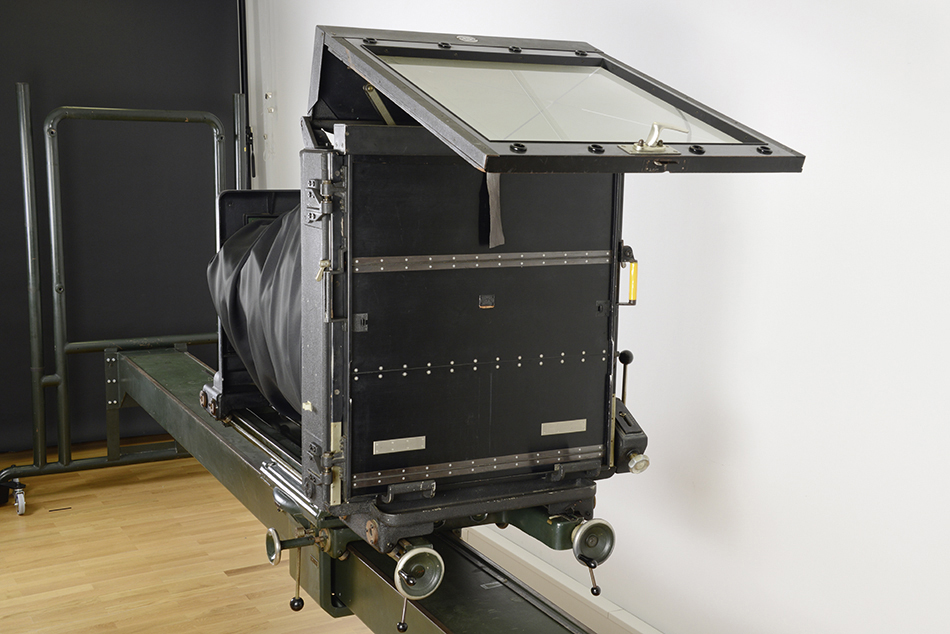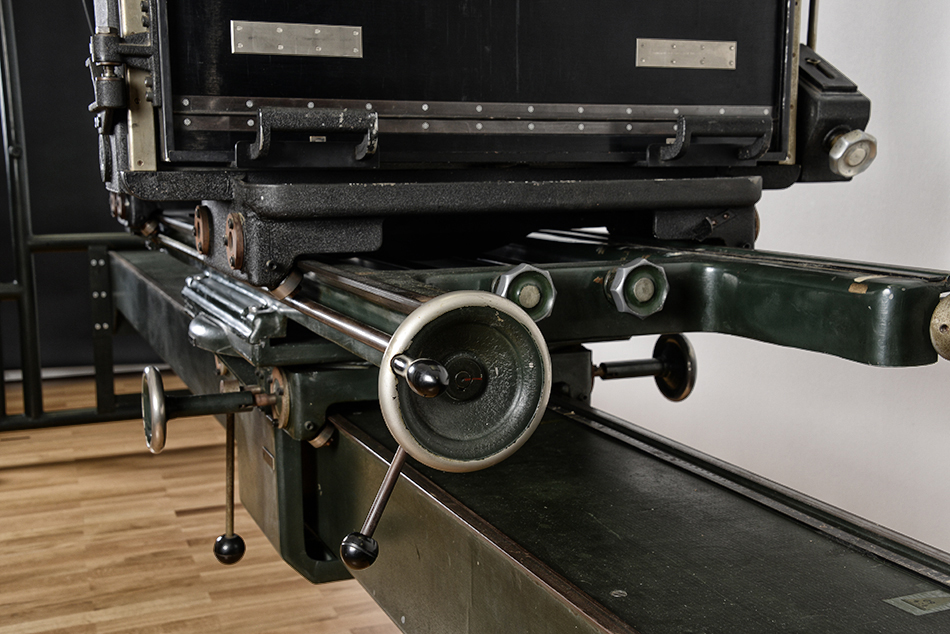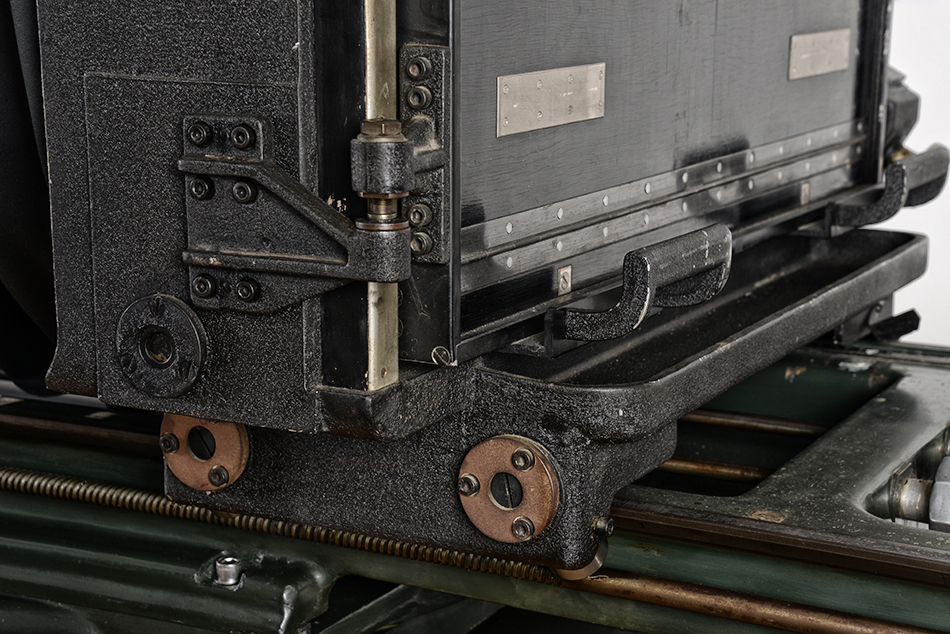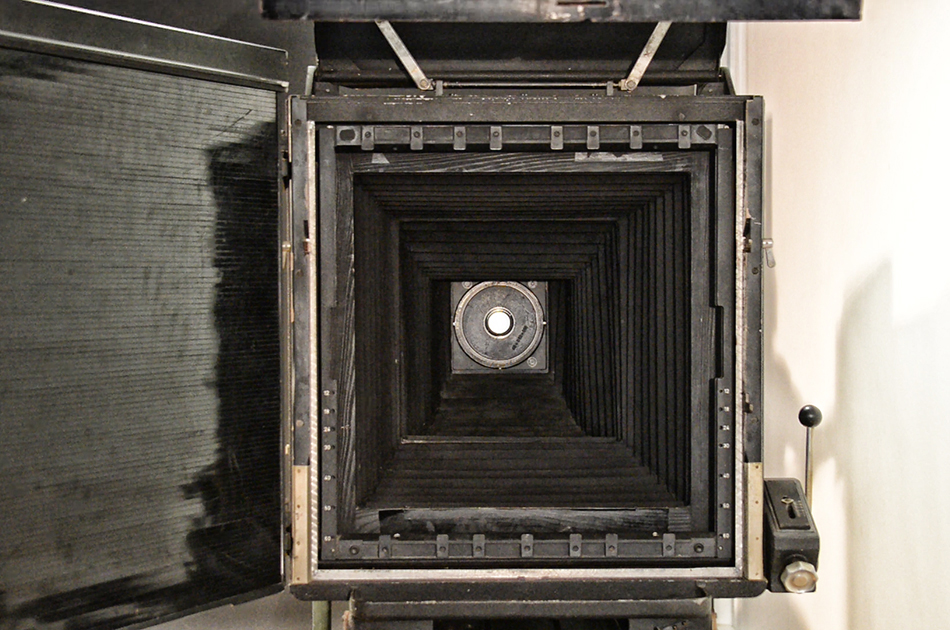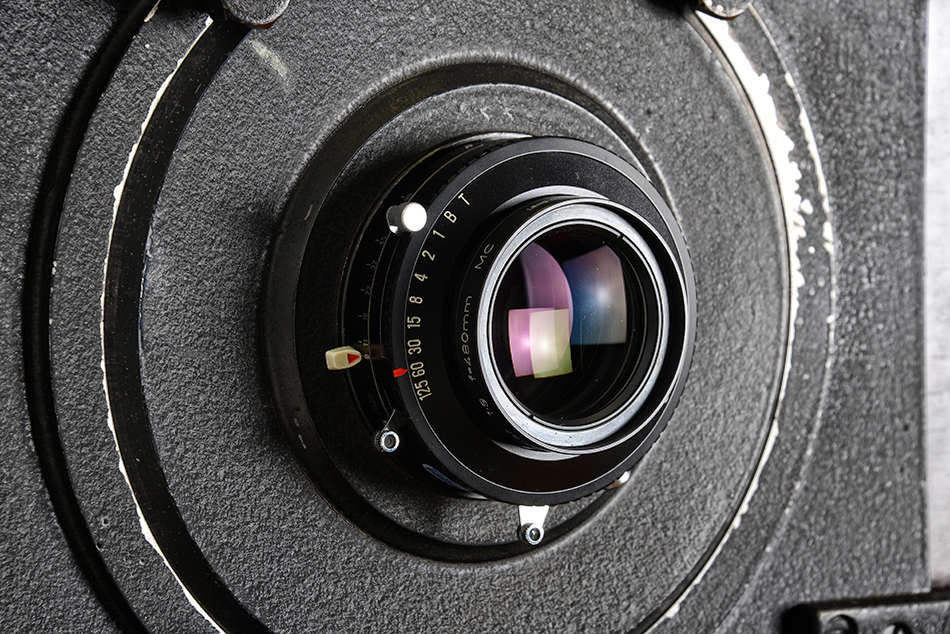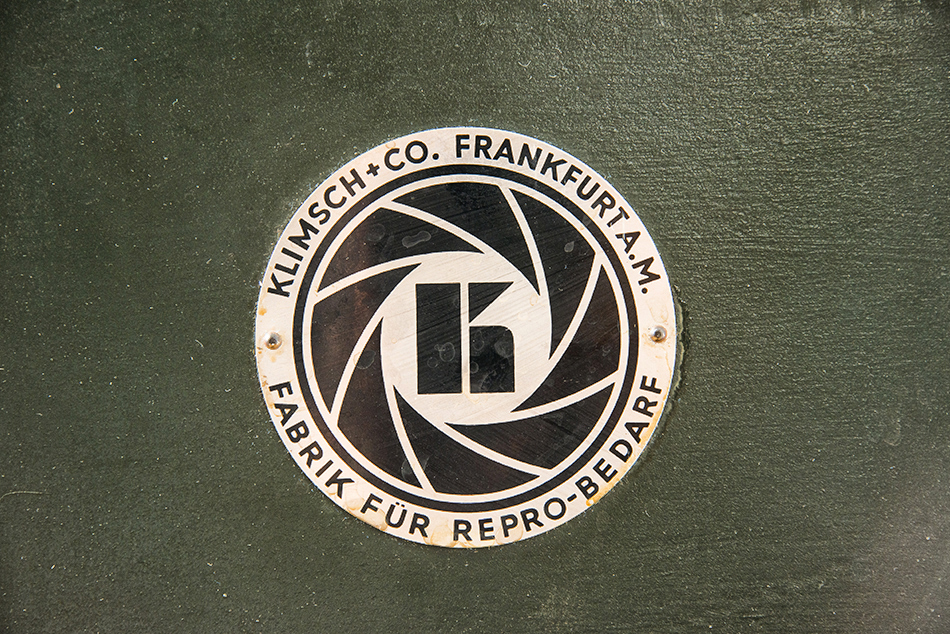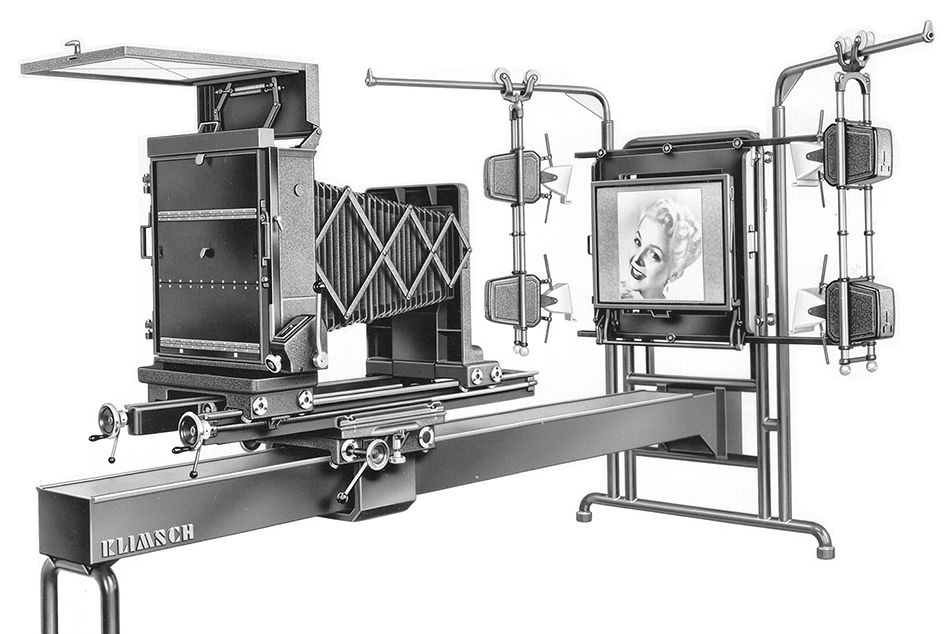Klimsch Praktika Reproduction Camera
Repro cameras were used to create print films until the mid-1980s. The printing plates were then etched from the print films and mounted on a printing cylinder to produce offset and gravure printing. The advent of digitization in repro technology meant the end of repro cameras. They were replaced by scanners and digital cameras.
Josef Dreisörner discovered the camera in a print shop in 2015. The camera, which had been dismantled into individual parts and stored there, was transported to Munich, cleaned and partially restored. He then reassembled the camera using the trial and error method due to the lack of a blueprint.
This Klimsch Praktika is one of the last repro cameras still in use. It was saved from being scrapped and reactivated with a great deal of effort and expense.
We take analog photographs on a 50×60 cm (20×24 inches) black and white negative film, or directly on a 50×60 cm (20×24 inches) special black and white positive photo paper – without the detour via a negative, creating unique one-offs. After exposure, the photos are developed by hand in the photo lab. When using the positive photo paper, it is not possible to reproduce the photo in analog form, nor is it possible to post-process it in the photo lab or digitally.
In portrait photography, it is necessary to constantly see the person being photographed through the viewfinder in order to communicate with them. You also need to be able to change the camera perspective quickly. A repro camera is therefore not really suitable for portrait photography due to its design, size, weight, unwieldiness and lack of a viewfinder.
Technical data
– Manufacturer: Klimsch + Co. Frankfurt (Main)
– Year of construction 1957
– Reproduction apparatus Klimsch Praktika
– Single-room camera, cassette type in metal design
– Camera usable format: 60×60 cm (20×24 inches)
– Lens: Klimsch Apo-Ronar f=600 mm
– Height: 2.1 m
– Length: 4.2 m
– Width: 1.4 m
– Total weight: 650 kg

